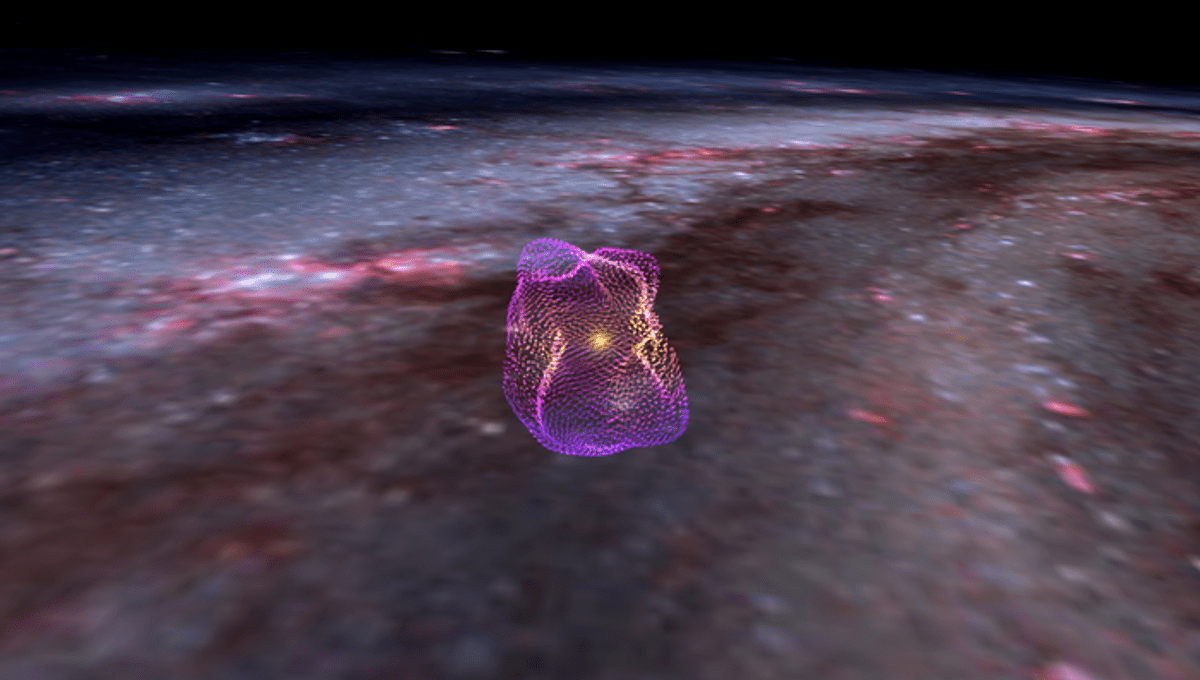
If anyone accuses you of “living in a bubble” there is an astronomically correct, if not always convincing, response: we all do. The Sun sits inside what is known as the Local Bubble, a space within the Milky Way galaxy some 1,000 light-years across in which interstellar material is scarce. It can be hard to map something from the inside, but that’s what astronomers have tried to do with the Local Bubble’s magnetic fields.
It’s easy to imagine that anything distinctive about our Solar System’s location must be connected to our apparent uniqueness. However, superbubbles like our own are not particularly rare; indeed, the galaxy has enough of them to prompt comparisons with Swiss cheese. They are left behind by supernova explosions that push gas and dust out of surrounding regions. The material swept out by the explosion concentrates on the bubble’s surface – still so thin it would be considered a vacuum by Earthly standards, but dense enough to trigger star formation.
Nevertheless, our knowledge of superbubbles in general and the Local Bubble, in particular, is almost as thin as the material inside. The magnetic mapping of the Local Bubble, presented at the American Astronomical Society’s 241st meeting, is an attempt to address that.
“Putting together this 3D map of the Local Bubble will help us examine superbubbles in new ways,” said Theo O’Neill, of the Center for Astrophysics | Harvard & Smithsonian, in a statement. Unusually, O’Neill got to lead the project while still an undergraduate at the University of Virginia.
“By learning more about the exact mechanics that drive the Local Bubble, in which the Sun lives today, we can learn more about the evolution and dynamics of superbubbles in general,” O’Neill added.
Magnetic fields are known to play a powerful role in galactic structures. However, the enormous but weak fields that stretch over thousands of light-years have proven difficult to map. “Today’s computer simulations and all-sky surveys may just finally be good enough to start really incorporating magnetic fields into our broader picture of how the universe works, from the motions of tiny dust grains on up to the dynamics of galaxy clusters,” said Harvard’s Professor Alyssa Goodman, who mentored O’Neill on the work.
We can’t see magnetic fields in space directly; instead, their presence is established via the polarization of light. The team were able to infer these fields by using the movements of stars provided by the Gaia observatory and the location of galactic dust revealed by the Planck Space Telescope.
Nevertheless, to produce their 3D map the team had to make the – currently untestable – assumptions that both the dust and the magnetic fields that together produce the polarization are concentrated on the bubble’s expanding surface. Goodman expressed the hope that future technology will allow astronomers to confirm or refute these assumptions.
Meanwhile, “With this map, we can really start to probe the influences of magnetic fields on star formation in superbubbles,” Goodman said. “And for that matter, get a better grasp on how these fields influence numerous other cosmic phenomena.”
Goodman regards the slow contribution of weak magnetic fields to star formation by influencing the movement of gas to have been neglected, and hopes to change this.
The work has yet to be published, but more information about the map can be found here.
Source Link: We Live Inside A 1,000-Light-Year-Wide Bubble Whose Magnetism Has Been Mapped